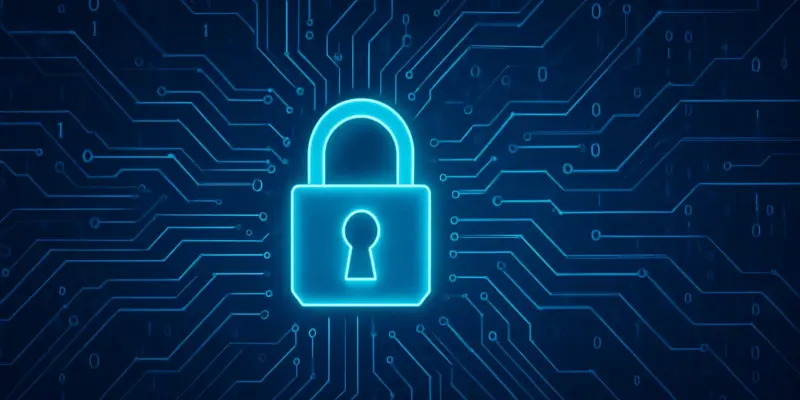In an era marked by the growing menace of cyber threats, the emergence of LOSTKEYS malware represents a significant escalation. Identified by Google’s Threat Intelligence Group (GTIG), this malware marks an evolution in tactics employed by the notorious threat actor, COLDRIVER, reportedly affiliated with Russian interests. LOSTKEYS deviates from prior methods used by this group by shifting focus from basic credential phishing to leveraging advanced malware for direct intrusion. This marks a notable shift in the landscape, where the malware now seeks not just passwords, but direct access to files and system data. This malware has been documented in attacks occurring across January, March, and April 2025, showcasing its potency and adaptability in real-time scenarios. By employing a complex, multi-stage infection process, LOSTKEYS has managed to infiltrate systems with alarming ingenuity, raising alerts within cybersecurity circles worldwide. This evolution not only demonstrates the advanced capabilities of nation-state actors but also showcases the intensified threats businesses and individuals face on a daily basis.
Multi-Stage Infection Process
LOSTKEYS unfolds through a carefully crafted three-tiered infection strategy that artfully manipulates those it targets. At its inception, it employs a fake CAPTCHA page, disguising its true intent while prompting unwitting users to execute a PowerShell script. The initial stage is merely the gateway, as it opens the door to more sophisticated tactics. In the second stage, the malware uses cunning techniques to avoid detection, most notably by identifying virtual machine environments through the verification of screen resolution. This shrewd move indicates a deep understanding of typical cybersecurity practices designed to catch such threats before they can do harm. The final stage of the infection involves a payload that’s downloaded and decoded using a substitution cipher and a Visual Basic Script decoder. This elaborate mechanism highlights how deeply tailored each attack is, as it utilizes unique identifiers and encryption keys to bypass barriers and hone in on high-value targets. This targeted approach underscores a significant level of premeditation, suggesting that preventing these threats requires preventative strategies and advanced countermeasures.
Threats and Proactive Measures
Despite these alarming capabilities, there are proactive measures that potential targets can take to protect themselves from the sophisticated threats posed by LOSTKEYS. GTIG actively advocates enrolling in Google’s Advanced Protection Program, a robust line of defense designed to fortify accounts on high alert for threats. Users are also encouraged to activate enhanced security measures within Chrome to reduce the risk of intrusion. Awareness and vigilance are critical as companies must consistently monitor for signs of compromised credentials to mitigate potential damage. Recognizing the increased sophistication in state-sponsored cyber warfare, the importance of continuous monitoring and updating security protocols cannot be overstated. GTIG’s revelations regarding LOSTKEYS have set a precedent not just within academia and cybersecurity sectors, but reverberating through public consciousness as well. The commitment to sharing evolving threats ensures a collective bolstering of defenses, equipping sectors and individuals with the knowledge necessary to guard against these digital adversaries.
Collaborative Defense Against Digital Warfare
The ongoing battle against such threats requires constant evolution in defense strategies. This is evident as GTIG, along with various collaborators, dives deep into past and present malware iterations to dissect their complexities. Earlier versions of LOSTKEYS were discovered dating back to December 2023, masquerading as seemingly innocuous Maltego-related files. However, these initial threats lacked confirmation of direct involvement by the sophisticated COLDRIVER team. By openly sharing their findings, GTIG highlights a commitment to bolstering industry awareness and improving the toolbox available for threat-hunting capabilities. As organizations strive to be ahead in the ever-looming threat landscape, this collaborative exchange strengthens overall protective measures, shedding light on the multifaceted challenges in tackling advanced digital adversaries. Strategic alliances and shared knowledge are indispensable in fortifying the lines of digital defense, building a more resilient shield against the ceaseless march of cyber warfare.
Ensuring a Robust Defense Strategy
In today’s world, cyber threats are an ever-present danger. Among these, the emergence of LOSTKEYS malware signifies a major escalation in the threat landscape. Revealed by Google’s Threat Intelligence Group (GTIG), LOSTKEYS represents a significant evolution in the strategies of COLDRIVER, a notorious threat actor likely linked to Russian interests. Unlike previous tactics like credential phishing, LOSTKEYS advances by using sophisticated malware for direct system intrusion, aiming not just for passwords but also for direct access to files and data. The malware has been documented in attacks that occurred in January, March, and April 2025, highlighting its efficiency and adaptability in real-world situations. Employing a multi-stage infection process, LOSTKEYS infiltrates systems with alarming skill, raising significant concern among cybersecurity professionals worldwide. This development underscores both the growing expertise of nation-state actors and the heightened risks faced by businesses and individuals regularly.

